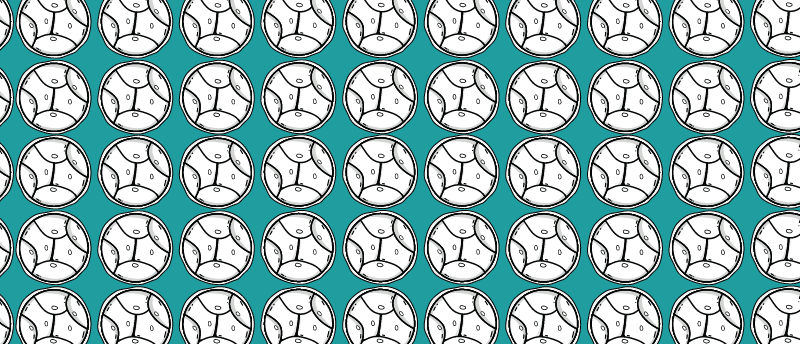Tiny shrimp has a unique way of organizing cells during embryonic development

The crustacean Parhyale hawaiensis (P. hawaiensis) organizes its cells in a grid-like pattern during embryo development, relying on grid patterning rather than chemical signals to dictate cell positions.
Researchers at the University of California, Santa Barbara (CA, USA) have performed a dynamic analysis of early embryo development in the P. hawaiensis crustacean for the first time, revealing a rarely seen side of developmental biology that operates on a geometric organization principle.
P. hawaiensis is an amphipod crustacean species used as a model organism in developmental and genetic studies and has been called a ‘living Swiss army knife’ due to its impressive range of specialized appendages. Instead of having a distinct larval form that undergoes metamorphosis, this crustacean is a ‘direct developer’ meaning it assembles a miniature version of the adult body during embryogenesis and gives a unique insight into tissue morphogenesis.
It remains challenging to observe and understand how young cells find their correct positions in embryogenesis. Interestingly, this question intersects both developmental biology and active matter physics, a field looking at the collective behavior of systems that involve multiple independent agents, for example, bacterial colonies, parasites or crowds of people.
The researchers of this study used live tissue imaging and tissue cartography to analyze the dynamics of a P. hawaiensis embryo 3 days after fertilization. “It looks like a thin layer of cells on top of a spherical yolk,” described Dillon Cislo, first author of the study. They computationally flattened the curved set of cells into a plane and tracked the cells as they divided and moved around.
12 hours after the start of observation, the population of cells had slightly more than doubled and were arranged into a grid, with rows that correspond to the segments of the P. hawaiensis’ adult body. Next, they observed that the monolayer of cells corresponding to the crustacean’s embryonic belly initially started dividing from the midline, with subsequent waves of division spreading laterally, dividing along the axis from head to tail. The researchers think the general axis for cell division could be related to a biological signal that is yet to be uncovered.
“The fruit fly, which is the hydrogen atom of developmental biology, organizes the segments of its body plan via a cascade of biochemical signals,” Cislo explained. “This is something totally different.”
 Computational redesign of psychrophilic enzyme increases its optimum temperature
Computational redesign of psychrophilic enzyme increases its optimum temperature
Researchers modify the structure of an enzyme to increase the optimum temperature of a reaction.
To maintain their alignment, some daughter cells reorient themselves as much as 90 degrees before dividing again, generating a fourfold orientationally ordered phase. “As it undergoes its division choreography, you begin to see new rows inserted between rows, pushing the rows above and below apart,” explained Cislo. “And this is very wild, because in a non-living physical system, this is a very energetically expensive operation.” The crustaceans perform this constant reorganization at room temperature, whereas metals and crystals needed to be heated to searing temperatures to achieve this. In the embryo, this organization takes place within a structured fluid state, similar to a superfluid from a physics point of view.
“There are some ideas about how to interpret these results,” commented senior author Sebastian Streichan. “The basic line of thought involves the orientation of animal limbs. Like our hands or legs, these limbs have clear orientations… and as the body consists of multiple such limbs, proper body function requires a coordination of the orientations of these limbs.”
The order created by the grid-like organization of cells and the potential for disorder presented by the fluid state and cell division are all essential to the flexibility needed for a biological system. Thus, this system exists within a ‘Goldilocks zone’ of order and disorder, with enough order to begin to build the organism’s body but with sufficient disorder to adapt to slight discrepancies that arise during the process.
Each cell has its own motor and ‘clock’ for autonomous cell division, creating variations and fluctuations – “noise” – during the early stages of cell proliferation and during a different stage when the tissue itself is also elongating. It seems this noise is necessary to shake cells up so they can settle into the correct ordered state.
The researchers used simulations to assess the impact that factors such as variation in timing, concentration of division or the presence of cells that did not reorient themselves during proliferation had on tissue morphogenesis. Ultimately, when any of these factors were altered, it was still possible to arrive at the same end result regardless.
Embryonic cells in other organisms rely on chemical signals to orient themselves correctly, whereas the P. hawaiensis utilizes a geometric organization principle, which guarantees the location and orientation of cells that become limbs before they develop.
“There could also be lessons for materials science,” added Mark Bowick, co-author. “If you want to build interesting materials, you may want to take lessons from biology and drive some of these materials systems out of equilibrium and make wonderful structures this way.”